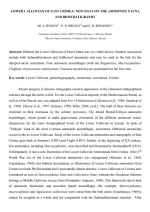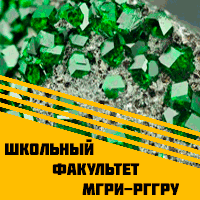Добрый день, Коллеги. Важное сообщение, просьба принять участие. Музей Ферсмана ищет помощь для реставрационных работ в помещении. Подробности по ссылке
Lower callovian of East Crimea: new data on the ammonite fauna and biostratigraphy / Нижний келловей Восточного Крыма: новые данные по фауне аммонитов и биостратиграфии
Recent progress in Jurassic stratigraphy result to appearance of the infrazonal stratigraphical schemes through the entire world. For the Lower Callovian deposits of the Mediterranean Realm, as well as of the Boreal one, was adapted from 8 to 18 biohorizons (Callomon et al., 1988; Sandoval et al., 1990; Thierry et al., 1997; Gulyaev, 1999; Mitta, 2000, et al.). The bulk of these horizons are restricted in their extension by the solitary provinces. The mixed Boreal/Tethyan ammonite assemblages, which permit to make approximate correlation of the different ammonite scales, characterize for the some stratigraphical levels of the Lower Callovian in Europe. In spite of ìTethyanî kind of the most Crimean ammonite assemblages, uncommon Subboreal ammonites occurs in the its Lower Callovian. Study of the Lower Callovian ammonites and stratigraphy of East Crimea goes back to Semenov (1885) and Voght (1897). Further, in the beginning of XX century, few ammonites, including Macrocephalites, were described and illustrated by Stremoukhoff (1915). Unfortunately, it was a sole illustration of the Lower Callovian Ammonitida from Crimea. After 2ndWorld War list of the Lower Callovian ammonites was enlargement (Muratov et al., 1960; Uspenskaya, 1969), but hitherto descriptions or illustrations of Lower Callovian ammonites from Crimea (exclude Phylloceratida and Lytoceratida) almost absence. Lower Callovian of Crimea now considered as sum of Macrocephalus Zone and Calloviense Zone, whereas the Enodatum Subzone belongs to Middle Callovian Anceps Zone (Permiakov, Sapunov, 1990). This framework due to lack of ammonite illustration and uncertain faunal assemblages (for example, Macrocephalites macrocephalus and Sigaloceras calloviense were noted from the both zones (Uspenskaya, 1969)), cannot be accepted as a whole and not comparable with the Submediterranean zonation <...>




